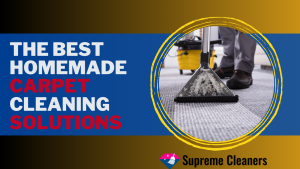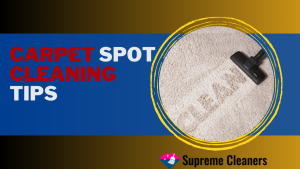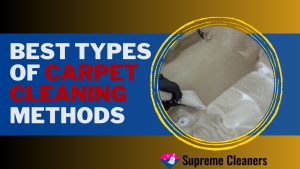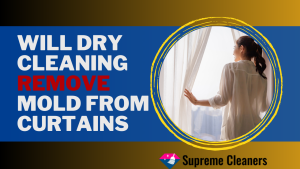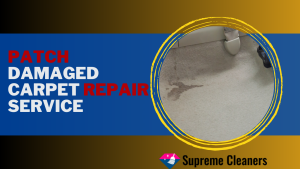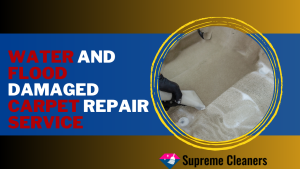If you have been experiencing strange and unexplainable smells in your surroundings, which could be possibly due to the presence of mould. Mould develops on carpeting after a water damage or flooding incident. Various moulds have the potential to emit spores that exacerbate allergic reactions, trigger asthma episodes, and potentially endanger the health of both humans and pets.
Mould and mildew are elements that damage the carpet little by little if they are left untreated for a long time. Also the spores can become extremely difficult to remove if left untreated. It is possible to breathe in mould spores which can cause skin, nose, eyes and throat irritation. There are ways to get rid of mould from carpeting and prevent your carpets from attracting mould again. Read this blog to know more about the same:
Signs to help identify a mould issue
These are some signs that can help you identify a mould issue in your carpeting:
- Dark brown, black or green circles on your carpet is a sign of mould developing in your carpets.
- The carpet looking discoloured is the most obvious sign of mould growth on its surfaces.
- A stinky and awful smell coming from your carpets also means it could be a sign of mould. Mould growth can also make your home appear dirty.
- Moisture that gets collected on the carpet despite regular cleaning can also attract mould and mildew.
Products that you would require for mould removal:
- Vinegar
- Baking soda
- Hydrogen peroxide
- Bleach
- Anti-fungal spray
Things to remember while carrying out mould removal:
- Check the source of moisture that has been responsible for the mould growth. Fixing up this issue will prevent mould growth.
- To stop or lessen the transmission of mould spores, you should isolate the area where you have located the mould from the remainder of your house.
- Remember to wear long overalls or fully-covering clothes while doing mould removal. You also need to wear goggles and face mask as mould can enter your body through your skin or when you breathe. A face mask will also protect you from the potential side-effects of the cleaning chemicals.
- Keep all the doors shut while carrying out the mould removal as that will ensure that the mould spores do not get a chance to spread to other portions of the house. However, it is advisable to keep the windows open for adequate ventilation.
How to carry out mould removal
- Make a solution using baking soda, and water. Apply it on the mould-infested areas and let the solution dry out.
- Use a HEPA vacuum to clean out the carpet before actual mould removal begins. Using the regular vacuum cleaner will lead to accumulation of mould spores inside and will scatter the spores in the entire house the next time the house is vacuumed.
- After that, you need to keep the carpets in sunlight for 1-2 days after they are treated. This will dry the carpet and also kill any remaining spores or mouldy areas easily. However, if they are not movable, opting for fans and dehumidifiers can also do the trick of drying out the carpets well removing every drop of moisture.
- After the carpets have dried out completely, remove the dried mould content from both sides of the carpet with a brush.
- Spray the anti-mould liquid on the carpet on both sides and allow it to dry. Make sure to cover the top and bottom of the carpets.
- Finally, you will again need to use a dehumidifier again to scrape out the traces of mould from the carpet.
How to get rid of mould permanently?
Eliminating mould growth permanently may not be possible, but observing a few preventative measures can surely help to keep off mould from your carpets for a long time:
-
Maintain the humidity levels in your house
Make sure to keep the humidity levels in your house to a minimum. That can be done with the help of air conditioning and dehumidifiers. Ventilating the spaces properly also can help in keeping humidity levels in your home in check. Set up fans to move the air around so that it does not gather in one spot on the carpet giving rise to mould.
-
Keep your carpeting dry
Ensure that there is no moisture content on the carpets at all times. If the carpets get wet dry it out alongside the backing in a thorough manner. Use a wet vacuum for the same. Pull up the carpet and the padding from the floor, dry them using fans and air movers and then reinstall them back. To make sure the carpets are completely dry, continue to circulate air over them for 24 hours a day for up to a week.
If you live somewhere where it rains frequently, place weatherproof mats at the entrance and remember to take your shoes and coat off before entering the home. Even a few water droplets from damp shoes or a raincoat can stay in your carpet and promote the growth of mould.
-
Avoid carpeting in moisture-prone areas
Avoid installing carpeting in moisture-prone areas like bathroom, basements, laundry rooms etc.
-
Opt for regular steam cleaning
Get a steam cleaner so you can keep the carpets clean regularly. Have your carpets steam cleaned frequently from professionals. It is a good technique to protect your flooring from mould, dust and dirt.
Most homeowners will experience some degree of house flooding at some point in their lifetime, whether it is due to strong storms, leaky plumbing, or a broken appliance. In order to stop future growth and associated health risks, you should take immediate action if you believe that mould has already infested your carpet.
It might be preferable to contact a professional for help if the problem is severe or if you can’t get rid of the mould on your own. Having moulds in your carpets is a challenging condition, but if the proper measures are taken alongside professional services then mould and mildew can be avoided as well!







